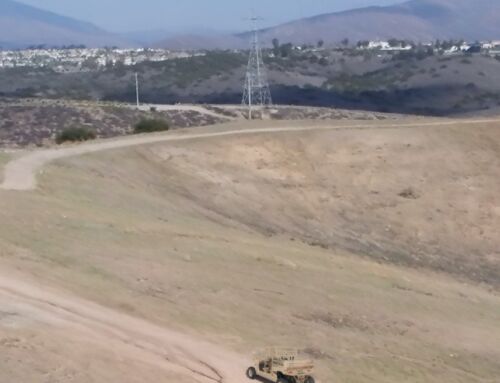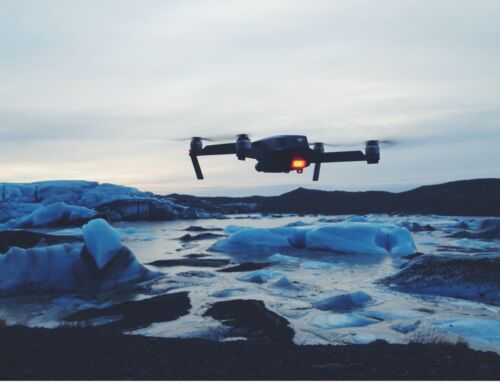We all know that unmanned aerial vehicles (UAVs) are being used for a variety of applications including photography, military operations, and transportation of goods. But did you know that underwater drones have been an equally crucial invention?
Underwater drones are similar to aerial drones in that they help give people safer access to areas that are difficult to reach. They function similarly—aerial drones using propellers to keep them in the air, and underwater drones using propellers that push water through them to move.
Underwater drones have been used since the 1950s when they were first introduced by the United States Navy. They presented the opportunity for the Navy to take part in oceanic exploration in a much safer and more time-efficient way than ever before.
It was an underwater drone called Argo, for example, that discovered the wreck of the Titanic in 1985. Argo was an unmanned vehicle that was capable of exploring the ocean 24 hours a day while its drivers were able to remain on land. This mission was led by Dr. Robert Ballard, a U.S. Navy commander, and scientist at the Woods Hole Oceanographic Institute, and it started a revolution of oceanic exploration.
What Is an Underwater Drone?
Essentially, an underwater drone is an unmanned underwater vehicle that can be directed from a distance. Divers face many dangers in the ocean, from predators to pressure changes. It’s a time-consuming operation as well, since divers must ascend and descend slowly in order to safely deal with the changes in pressure.
Manned research submersibles offer another option for deep-sea exploration, but they present their own issues. Submersibles require a ship from which to launch, highly trained pilots, as well as a great deal of planning, manpower, and funding.
Underwater drones were created to eliminate the dangers of sending people into the ocean. They can be controlled either on land or from a boat on the surface. With constantly improving technology, underwater drones have since evolved to greatly increase their reach and can function quite efficiently. What’s more, many require a minimal amount of manpower and can maneuver in areas too small for human-occupied vehicles.
Piloting an Underwater Drone
Underwater drones often use either sensors or drone tethers to allow for communication between the drone and the operator. This communication allows the driver to tilt, elevate, or turn the vehicle as well as send and receive information. The drones also have cameras and lights so the driver can see what the drone sees.
Underwater drone operators face a problem familiar to many UAV pilots—battery changes. High-quality batteries for underwater drones can last six to eight hours. When it comes to deep-sea missions, that is often not long enough.
It turns out that the solution for underwater vehicles is the same as it is for UAV pilots—tethers. Underwater drone tethers generally range from 50 to 300 meters. They allow the vehicle to remain in the water for as long as is necessary. Missions can be more efficient and less time-consuming.
Underwater drones have been an important invention for multiple industries. As they evolve, they will become faster in both speed and information processing as well as more energy efficient. Unmanned underwater vehicles will continue to be used in ocean exploration and other current use cases as well as new applications we haven’t yet imagined.
How Are Industries Using Underwater Drones?
Underwater drones have wide applications across many industries. Today they are most often used by the military, oil and gas companies, and the aquaculture industry.
U.S. Military
In 2016, the United States Navy proposed $319 million of President Barack Obama’s budget go towards the development and purchase of underwater drones to be used to gather intelligence, hunt submarines, and chart the ocean floor. Underwater drones are particularly beneficial to the military as they provide a much safer way to locate and defuse mines. They can also aid in port security, detecting contraband, and even for taping underwater training exercises.
Oil and Gas Companies
Underwater drones aid oil and gas companies in performing inspections, monitoring, exploration, and production. Much of our oil and gas resources come from beneath the ocean. Unmanned underwater vehicles are now depended upon for installation, inspection, and repair—tasks that used to be done by divers. Drones allow for more frequent inspections, which allows small issues to be identified early and fixed before they become major catastrophes.
Aquaculture
Underwater drones are also providing help to fish farmers. They can help monitor water conditions as well as help identify and fix things like torn nets. Similar to other industries, drones are performing operations that once required divers and were expensive and risky. Unmanned vehicles allow footage to be easily shared with experts when input is needed. They can also be used to explore potential sites for new operations.
Although underwater drones and aerial drones often have very different uses, they function very similarly and, at times, can be used together on a mission. They also face some of the same issues. Underwater drone tethers have provided a solution similar to what Blue Vigil has provided for today’s UAVs.
Are you interested in learning more about how Blue Vigil tethers can improve your aerial drone missions? Please contact us at [email protected].




